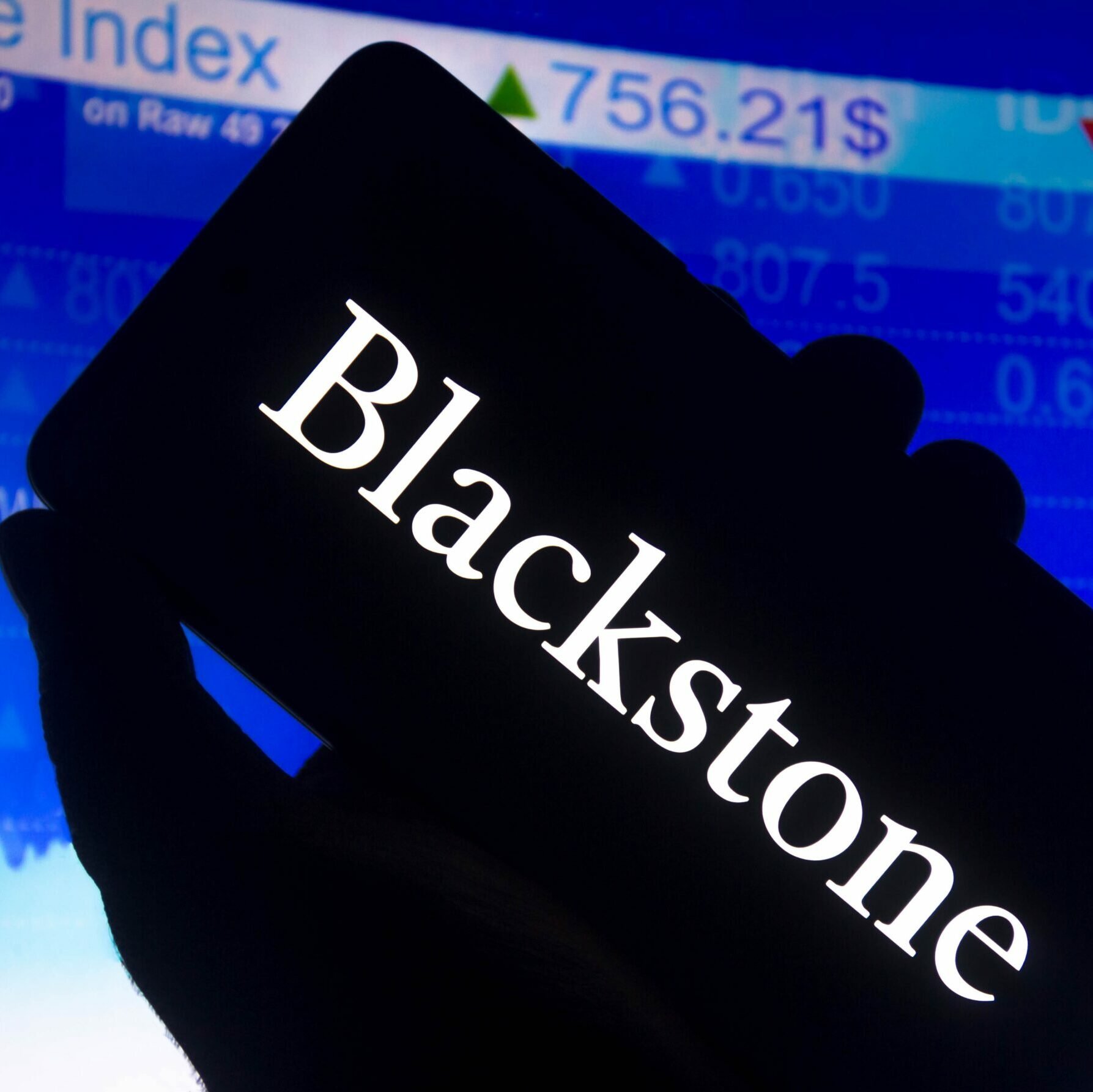Craig Macdonald, Managing Director, Harbourvest
2021 was a year of considerable activity, particularly in the tech and healthcare sectors, as investors sought resilient assets which were well-placed to weather, and even grow in, the pandemic environment.
However, in line with the broader global recovery, other sectors such as industrials and consumer are starting to spring back, and activity across sectors is gradually balancing out.
We have seen a meaningful increase in consumer deal flow, with growth in consumer discretionary being particularly strong. For example, consumer discretionary deal flow is up around 70 per cent in absolute terms in 2021 compared to 2020, and consumer staple deal flow is up 50 per cent in absolute terms over the same period.
We continue to see growth across consumer in 2022, but consumer discretionary is growing slightly faster than consumer staples. We think this reflects sentiment that while the pandemic remains, consumers and the wider economy are learning to live with it.
As we move out of the pandemic, it will be important to build a diverse portfolio which is protected against downside risk, while also being able to capitalise on opportunities as the economy recovers across all sectors.
The American economist Harry Markowitz once said: “Diversification is the only free lunch in investing.” Private equity’s approach to diversification has been in evidence ever since the global financial crisis (GFC). Pre-pandemic, the trend towards increasing exposure to technology and healthcare was already apparent. This was then accelerated further by the pandemic, as both sectors were positioned to benefit from changes in trends such as remote work. However, the increase in exposure is modest within funds which are meant to be sector agnostic.
It is worth noting that tech and growth-focused funds have increased in number and size, and many cross-sector managers have been able to increase their exposure to growth by providing LPs and prospects with tech-focused funds.
Despite the general trend of recovery, companies will still face challenges in 2022, particularly around inflation and supply chains. Private equity as an ownership model is well placed to handle inflationary pressures, but we need to keep a careful eye on the pricing environment. Supply chain issues are also prevalent, especially given the pace and scale of recent disruptions – resolving these will be a key
priority for the year ahead.
Looking ahead, investors will need to be particularly focused on their partnerships. For GPs, this will be crucial. Industry expertise and moving to address these challenges quickly will be a competitive advantage.
Superior managers’ abilities to differentiate themselves from both public and private benchmarks against the backdrop of a potential downturn in markets is key and investors will want to be as selective as possible in their GP relationships. This has always been the case but will gain renewed focus as we move into 2022.
Nick Sealy, Co-Head of European Investment Banking, Baird
There was a normalisation in industrial M&A in the third quarter of last year. It represented a 28 per cent share of European private equity activity, up from 20 per cent in H1 2021 for the middle- market (deal values of EUR100m–EUR500m).
However, this industrial M&A activity was skewed towards more defensive or growth sub-sectors such as packaging and automation. Industrial, much like other sectors, is experiencing significant bifurcation in terms of buyer demand and valuation between faster growing resilient assets that benefit from megatrends, such as ESG and digitisation, relative to those that do not.
The unprecedented nature of the current crisis with supply chain issues and high inflation is having a material operational and financial impact on most industrial businesses, a situation that is expected to continue until mid-2022. Some companies are able to pass on cost inflation to their customers contractually or otherwise, while others are struggling to agree price rises with their large original equipment manufacturer (OEM) customers. As a result, a number of sale processes that have yet to launch are being delayed to 2022, while some late-stage M&A processes are slowing as potential buyers refocus their due diligence to understand the impact of this current crisis on the target company.
In terms of a broader range of sub-sectors, we expect companies to come for sale in 2022, including those recovering from the impact of Covid, such as commercial construction.
Industrial assets vary in quality and size, and there will remain a scarcity of sizeable and high-quality targets relative to M&A demand, for example above EUR25 million EBITDA and with an EBITDA margin above 20 per cent.
European buyout firms with record levels of dry powder have been winning competitive industrial M&A auctions, taking share from strategic buyers in recent years. The combination of high M&A demand and low supply of sizeable high quality industrial platforms increased valuation levels for top quartile assets in 2021; a trend we expect will continue in 2022.
US industrial corporates are strong acquirors of European targets, benefitting from valuation arbitrage (driven by elevated US public company valuations) and synergies. Industrial corporates are using M&A to reduce cyclicality, add technology and increase exposure to secular growth themes. In view of this, private equity firms will therefore face fierce competition for best-in-class assets, such as those with recurring revenue, connected products, ESG driven business models and automation driven demand.
Private equity’s competitive advantage has been upfront work, researching the specific sub-sector and meeting management teams of European industrial targets before the launch of a sale process, to then move quickly and efficiently through due diligence and M&A negotiations. This dynamic will only become more important in 2022 as potential buyers determine which industrial targets they will invest both the time and the money needed to seriously pursue those opportunities.
Stephan Schäli, Chief Investment Officer, Partners Group
With extremely short processes and high valuations having become the norm, the only way to prudently invest in this environment is to adopt a targeted sourcing approach, building strong conviction in those investment themes that will continue to generate sustainable growth, regardless of economic dynamics.
We pursue 40-60 investment themes at any given point in time across our four private equity sector verticals: technology, goods and products, health and life, and services. Many of the transformative trends reshaping the way we operate lie at the heart of our thematic investing approach and were accelerated by the pandemic.
One of these, the food value chain – from inputs to production and then to processing, retail and delivery – represents a significant opportunity set, with a similar market size to global pharmaceuticals. We have regarded this as a strategically critical sector for several years – something that has been highlighted by the Covid-19 pandemic. We believe the industry is now poised for sustainable long-term growth.
This is supported by three secular trends. First, the sector is shifting towards responsible and sustainable food production, with an emphasis on minimising the impact that agriculture has on climate change, increasing the share of organic agriculture and reducing food waste. Unilever, for example, has revealed that its sustainable living brands are growing 69 per cent faster than the rest of the business. Second, ensuring food security for the global population has become a key priority, with end-to-end transparency and traceability now expected to become the norm. Finally, modern consumers are shifting towards healthy consumption alternatives and are willing to pay a premium for sustainably and responsibly sourced inputs.
One particular sub-segment where we expect to find opportunities is the burgeoning alternative protein production sector. Meat industry leaders such as Cargill and Tyson Foods have already shifted operations and investments towards plant-based substitutes and cell- cultured products. The acceleration of plant-based foods, driven by health, animal welfare and environmental concerns, has evolved into an overwhelming trend. We are also targeting opportunities around agricultural breeding and nursing, designed to increase crop output, as well as flavour and ingredients suppliers with strong development potential.
Covid-19 has amplified many of the themes in our focus areas. In particular, there are two types of assets that are well equipped to foster growth: businesses that are enabling the shift towards a more sustainable world, and tech-enabled companies.
Identifying long-term investment themes in the technology sector is inherently challenging. By definition, technology reinvents the future, and so relying on preconceived frameworks is inhibiting. We therefore ensure that we view the opportunity set from multiple angles. First, we consider which solution category is yielding strong value propositions by driving productivity for end users. We then look at which underlying technologies are at the right stage of the adoption curve, from the user experience to the underlying hardware. Finally, we look at the customer universe and consider which customer sets are at a technology-purchasing inflection point.
By viewing the market through these multiple lenses, we are able to uncover long-term trends that are supported by our digitisation and automation and ‘New Living’ giga themes, and target technologies which have broad adoption and long-term use cases. This approach has resulted in the identification of several potential investment opportunities, including small and mid-sized business digitisation, outsourcing applications and robotic process automation, which lie at the heart of the digitisation trend. Similarly, we have identified attractive segments that lie at the intersection between the digitisation and automation and New Living themes, including new payments, e-commerce enablement, IoT, digital engineering and digital marketing.
Many transformative trends in the technology and healthcare space continue to be amplified by the pandemic. Valuations tend to be higher in these segments but are justified by strong conviction in the above- average growth outlook.
Elsewhere, we focus on companies that showed resilience during the pandemic and leading companies in fragmented markets are particularly appealing given our strong capabilities in platform expansion strategies. We are selective on growth, where we find many interesting companies but correspondingly high, often difficult to justify, valuations.
Jérôme Chevalier, Founding Partner and Chairman, Quadrille Capital
Last year proved that a portfolio capable of delivering consistent, cycle-resilient returns requires considered exposure to the technology and healthcare sectors.
Across the year, valuations within these two industries increased markedly and while some investors consider the attractiveness of these spaces to be overplayed, significant tailwinds are set to remain in place in 2022.
The pandemic did accelerate the digitisation of a whole host of industries, however ample room remains for further breakthroughs that can revolutionise how we live, work, and consume. Emerging technologies like artificial intelligence and gene therapy have the clear potential to create value that far exceeds that which stemmed from the advent of the internet. The tech ecosystems in both Europe and China have matured and paired with this, investors’ approach to these assets has become more sophisticated – GPs are pivoting away from pursuing disrupters in favour of companies with clear and financed pathways to further growth. That all being said, the context in which technology and healthcare investors operate will continue to grow more complex and we expect some major shifts in this sphere over the next year.
At the end of Q3 2021, 104 buyout funds closed with an aggregated value of EUR88.3 billion, according to Pitchbook, putting 2021 on track to deliver another record-setting year for capital raised. This trend of year-on-year record-breaking in the private markets is set to continue into 2022 and the levels of cash in the market will naturally drive valuation growth.
The extent of this growth is set to be greater than in previous years, with specialist tech funds being raised more frequently and an increasing number of non-traditional operators, such as the hedge funds Tiger and Coatue, entering these spaces, as the cross over funds did before them. The exercise of identifying and securing the right assets will become more competitive, which, in turn, makes the process of de-risking early-stage investments even more complex. In the face of these adverse conditions, investors will seek out the ability to access the best assets through various angles, including via the secondaries market, which we see as an area of substantial growth as early as next year.
Public market volatility, in combination with the need to deploy record levels of capital in increasingly crowded and mainstream private market, is set to focus LP minds on asset liquidity and the exit routes their managers might employ. GPs will need to expand their use of sell-side secondary transactions as a complementary means of realising their investments – this will be especially pronounced among technology and even more healthcare-focused GPs that require to hold and finance their assets over a longer period. Indeed, the agile and systemic use of sell-side secondary transactions will become a more common feature in the market as LP concerns relating to liquidity options and Distribution to Paid-In (DPI) reaches new levels amid a greater level of market risk.
Building on this theme, 2022 will see the development of a more buoyant buy-side secondaries market for technology and healthcare assets. Following a decade-long track record of strength for primary investments, and given the current level of valuations, it appears to be the optimum time for this to occur, as it has in the buyout market.
Looking to the future, it’s quite possible that the value of secondaries in tech and healthcare assets will eventually eclipse the value of primary transactions. As secondary transactions are substantially more difficult to source and price than traditional buyouts, investors will progressively seek out specialised and differentiated investment managers knowledgeable of the space.
Davis Noell, Senior Managing Director, Providence Equity Partners
The last few years have brought a flood of capital into private equity, in particular around enterprise software and growth equity technology companies.
As we look forward into 2022, this trend will almost assuredly continue given the massive amounts of capital being deployed to pursue those strategies. The risk here is that anytime there is so much capital chasing the same strategy, eventually the excess return gets priced out of the deals and the overall return profile suffers. No-one knows exactly when a correction will occur, but inevitably, it will, and our goal is to continue to follow a prudent investment strategy that works over the long-term through any market cycle.
We’ve been sticking to our core sectors of media, communications, education and technology. In order to mitigate some of the risk we see in the market overall today, we’re focused on disciplined pacing and diversification of our portfolio. What that means for us is a measured approach to investing, while also looking to generate realisations in our existing assets where possible. Ideally, we seek to invest at a steady pace over a four-to-five-year period. This is a contrast to others we’ve seen in the market who are investing over half their available capital in the last twelve months alone. At the same time, realisations in our older investments have allowed us to take advantage of the current markets. We have managed our portfolio with a goal of being effectively market neutral, seeking out the best companies and helping them grow.
To build a diversified, robust portfolio, we have tried to balance our investments across our areas of strength. We look to deploy capital across North America and Europe to find attractive investment opportunities at any given time. We also seek diversification across our four sectors. We try to identify the right long-term growth themes and then pick the best management teams and companies that fit those themes. Even though certain parts of the market might be expensive, in our view there are still great companies in which to invest.
Lastly, we try to pursue a variety of companies, so that every investment isn’t correlated to the same themes or key factors. We always keep an eye toward solid growth and profitability, and have a portfolio that is composed of investments acquired at a range of EBITDA multiples. Ultimately, our intention is to buy attractive organic growth companies that we can use as M&A platforms and do that at reasonable prices.
Looking into 2022, we see a continuation of a very active deal market, combined with one of the busiest capital raising calendars in history, as more GPs are deploying capital faster and looking to raise ever larger funds. Our focus is to continue to responsibly deploy capital, build a disciplined and diversified portfolio and remain committed to our core sectors of experience.
Niels Bardelmeijer, Partner, Stafford Capital Partners
Due to an abundance of relatively cheap capital and a lack of alternatives, the private equity market is becoming increasingly competitive and expensive. As a result, our concerns have been, and will continue to be, related to the ability of managers to source and acquire the right companies at reasonable prices and subsequently be able to realise the potential value.
For these reasons, it has in general become easier for private equity firms to raise new capital. This also holds for emerging managers and is part of the reason why we have seen an increase in the number of emerging managers in past years.
However, there are differences between emerging managers. For example, for first-time funds it is generally more difficult to raise capital than for a spin-out or a management team with a joint track record. At the same time, emerging managers oftentimes exhibit attractive characteristics such as strong alignment of interest between the team and the investors, leading to outsized return potential. Therefore, emerging managers have always been an important focus area for us to invest in and with.
We have also seen an increase in sector specialisation in the past few years. This trend continued during the pandemic, with an increased focus on the tech and healthcare sectors in particular. In addition, sustainability is getting more attention and we see more managers specialising in this area. We expect this trend to continue in the years to come.
We have always had a strong focus on sector-specialised managers and we will continue to do so going forward. The healthcare and technology sectors are important focus areas for us as they offer attractive characteristics such as high growth, recession resilience and strong historical returns. Playing in the right sectors increases the opportunity for strong returns. However, winning investments exist in every industry. Finding them and creating real value are the key ingredients to success and requires both deep knowledge of sector dynamics and a clear strategy and proper execution by the management team.
Due to the persisting disruption, we expect continued interest and competition for deals in these sectors. In our view, deep sub-sector expertise, a strong conviction about the path towards value creation and extensive networks have never been more important.
Although there are many topics that are addressed by LPs during fundraising and deployment, key issues are the alignment of interest between LPs and the GP, and discipline.
On the back of the strong performance of private equity in recent years and a lack of alternatives, there is an abundance of available capital, there is strong tendency to shorten the time between funds and raise bigger funds. This raises concerns related to pricing discipline, potential strategy drift, valuations, and the ability of a manager to generate the same returns as in the past. It is therefore more than ever critical for LPs to remain disciplined when it comes to the selection of funds and challenge the GPs on all of these aspects. Once invested, it is important to stay close to the GPs to ensure they remain disciplined and stick to the strategy in order to be able to generate value and realise strong returns.
Another common question for GPs which will continue into 2022 is related to how they incorporate environmental, social and governance (ESG) considerations in their investment process.
To be more precise, GPs are expected to be a signatory to the UN Principles for Responsible Investment, have an ESG policy in place, monitor and report on the most relevant ESG KPIs for their portfolio companies and assess their contribution to the UN Sustainable Development Goals (SDGs).
Since the EU SFDR regulation came into effect in March 2021, European GPs are also required to provide more detailed sustainability disclosures at the firm level and at the fund level, if their funds promote environmental or social characteristics or have sustainable investments as an objective. In other words, sustainability and ESG integration will remain high on the agenda of LPs and GPs in Europe.
Hajir Naghdy, Senior Managing Director, Stonepeak
As a global investor in essential infrastructure, Stonepeak takes a thematic approach across target sectors where we believe tailwinds are strongest.
Heading into 2022, we continue to focus on trends impacting three key areas: energy transition and renewables, specialised logistics and digital infrastructure. While the macro trends underpinning these sectors are attractive globally in our view, we see Asia as a particularly compelling region in which to deploy capital and expect interesting opportunities in the year ahead.
We believe that the global energy transition and shift toward renewable energy presents one of the most significant opportunities for private capital investment this century. We are seeing meaningful opportunities in this sector in Asia Pacific, where governments are pushing ambitious energy transition rollouts and placing serious policy focus on new technology. Electric vehicles, hydrogen (with 80 per cent of the APAC economies setting a national hydrogen strategy), offshore wind, and LNG as a key transition fuel displacing coal in the region are trends we are actively following.
Another area of rapid change and opportunity that we are seeing is communications and digital infrastructure. The number of regional internet users, networked devices, and fixed broadband subscribers continues to increase meaningfully year over year, driving significant demand for data centers and mobile infrastructure. APAC is set to continue to outpace North American and European markets in data growth and digital infrastructure demand.
Growing GDP and consumption trends in APAC are also catalysing the continued build-out of the logistics sector in the region with APAC expected to drive 50 per cent of the world’s consumption by 2030. E-commerce is playing a major role in the need for more logistics infrastructure: six of the top 10 fastest-growing e-commerce countries are in the APAC region. Modern logistics capacity needs to increase by anywhere from 50 per cent to 10 times in key Asian markets, requiring substantial investment.
Outside of Asia, as we think about other important areas of potential opportunity and challenge for sponsors in the year ahead, we see ESG and addressing pressing issues related to decarbonisation as critical to maintaining license to operate. GPs must have an increasingly sophisticated and fulsome view of the specific ESG challenges across their portfolio and a clear plan to measure and improve the ESG performance of their assets over time in line with net zero ambitions. 2022 will be an important year for sponsors across asset selection and management, measurement, and reporting as many continue to evolve their policies and processes amid increasing pressure from LPs and other stakeholders to demonstrate more meaningful contributions toward global solutions for climate change.






